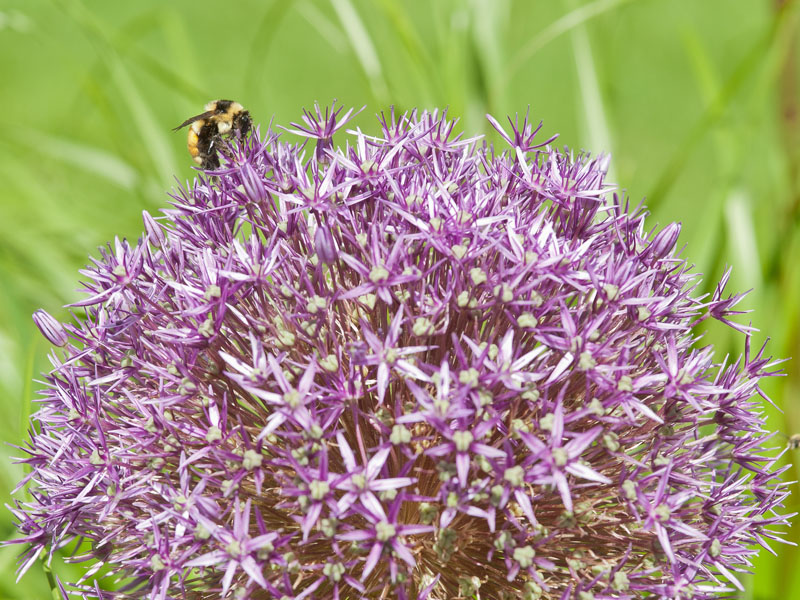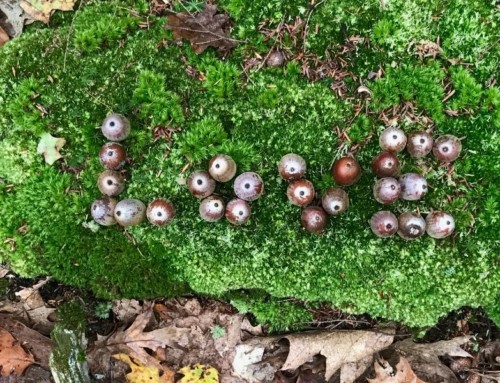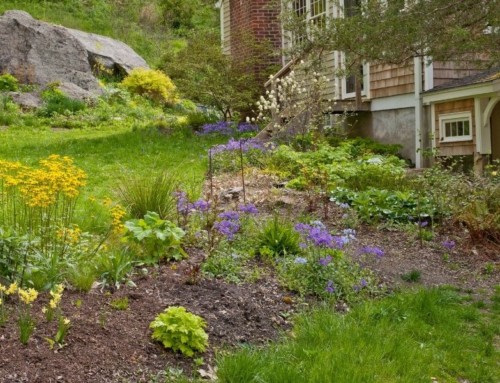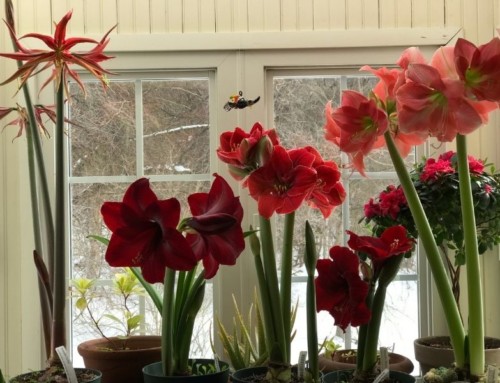As I increasingly pay attention to what plants native bees and other pollinators visit in my garden, I can’t help but notice the insect frenzy on allium flowers.
Having tried a whole lot of these fall-planted, spring and summer-blooming ornamental onion bulbs, I also can’t help noticing that their strappy leaves look pretty crappy when flowers are at their most splendid.
Or that some of them are freakishly huge on gawky, too-tall stems. The giants like ‘Globemaster’ and ‘Gladiator’ might make impressive displays, but they’re tricky to integrate into a garden.
Small varieties fit in more gracefully, with charming, but modest visual impact. They can get swamped by perennial companions before foliage ripens if you don’t get the timing and height right.
Some (Drumstick alliums, Allium sphaerocephalon, I’m looking at you) self-sow all over the place. I’ve never figured out how to deal with the grassy non-blooming foliage that sticks up everywhere (usually where I don’t want it) in their wayward youth.
Showy Star of Persia (Allium christophii, aka A. albopilosum) is the star of all the gardens I have anything to do with. It’s a Goldilocks plant – not too tall, not too short, with easy-to-hide foliage, just the right-sized flowering globes – and pizzazz to spare.
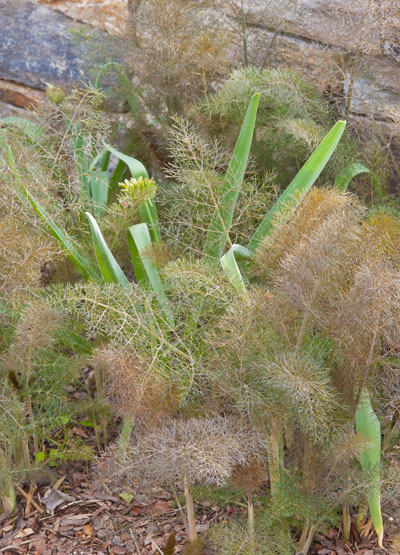
Bronze fennel is a good companion for Allium christophii
Allium Christophii
- Foliage about 6″ tall, easy to tuck into perennial foliage
- Flower stems 12-20″ depending on growing conditions and bulb quality
- Up to 100 star-shaped metallic amethyst-hued flowers with green “eyes” form a globe-shaped inflorescence, 8-12″ in diameter
- A June bloomer that still looks good in July and August
- Pollinators love them
- Deer-resistant
- Good as a cut flower or dried
- Plant in fertile, well-drained soil in full sun
- Elegant and affordable
- What more could you ask for?
Emerging bronze fennel leaves contrast nicely with young Allium christophii foliage. Allium bloom stalks and fennel fronds grow taller together, a sophisticated combination of architectural flowering globe hovering above filigree texture. Fennel’s airy foliage lets light reach allium foliage while it’s growing and conceals it when it gets ugly.
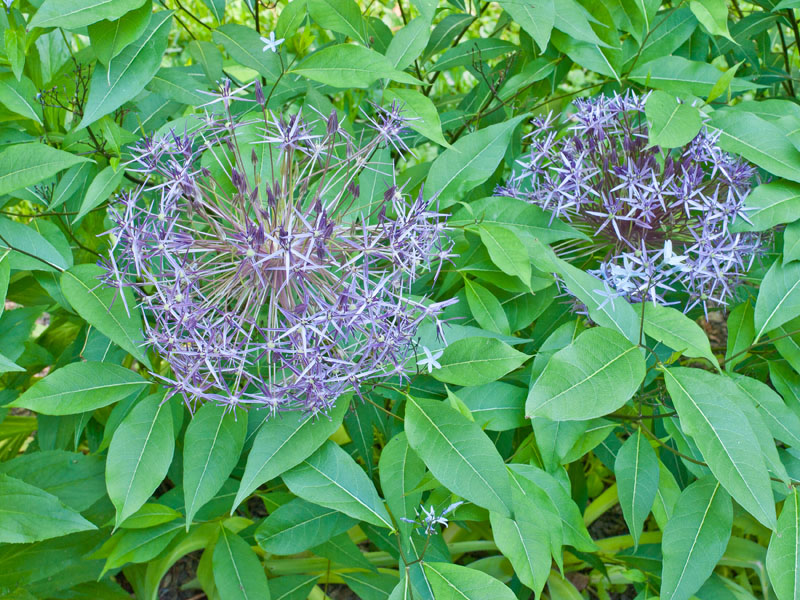
Allium christophii sharing foliage with Amsonia ‘Storm Cloud’ in my garden
Ageing Allium christophii flowers remain attractive, but foliage turns yellow while it’s still blooming and then browns out.
Golden feverfew (Tanacetum parthenium ‘Aureum’) is just tall enough to conceal the mess and set off Allium flowers and seedheads. After the feverfew set seeds in this newly renovated garden, I sprinkled them throughout the planting to fill in before the next year’s show.
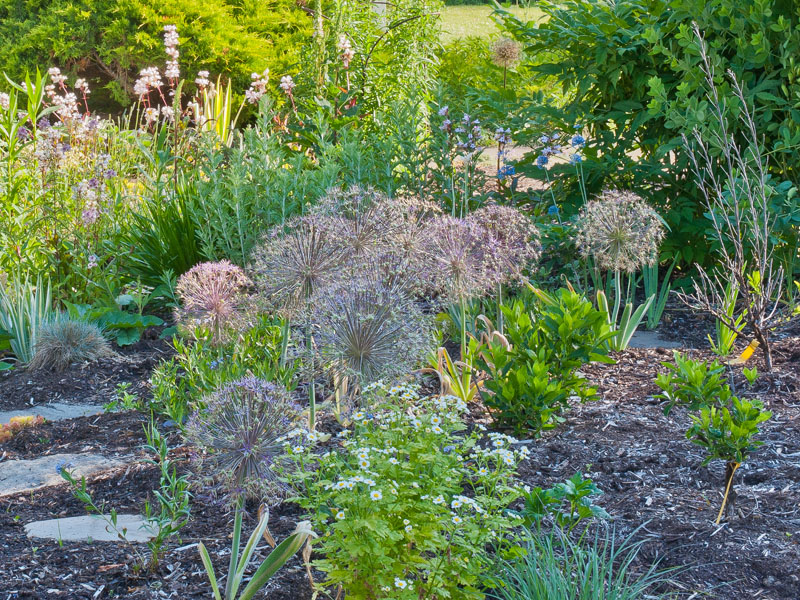
Leave dried seedheads in the garden or harvest them for dried indoor arrangements. Stems will eventually soften and fall over. Slip the hollow allium stems over a piece of welding rod or stiff wire stuck into the ground to get them standing up straight again.
Or snip them for your favorite kid. They make the best magic wands, especially when covered with glitter or metallic spray paint.
